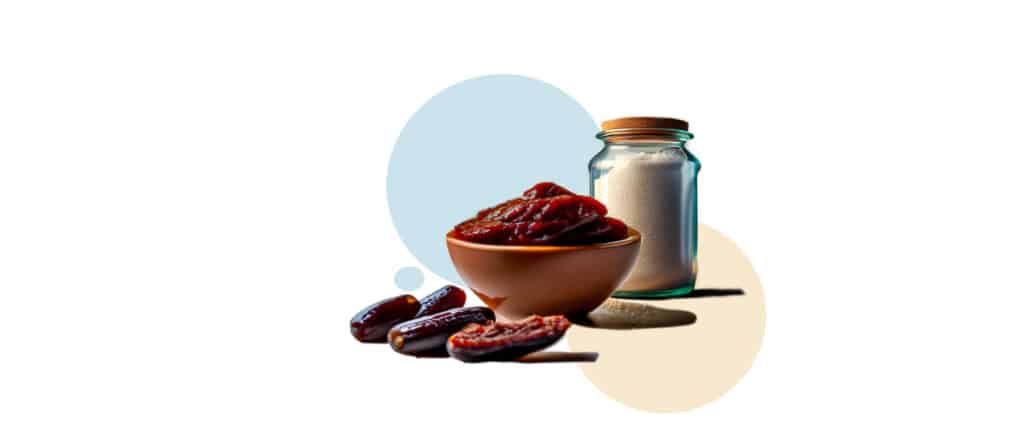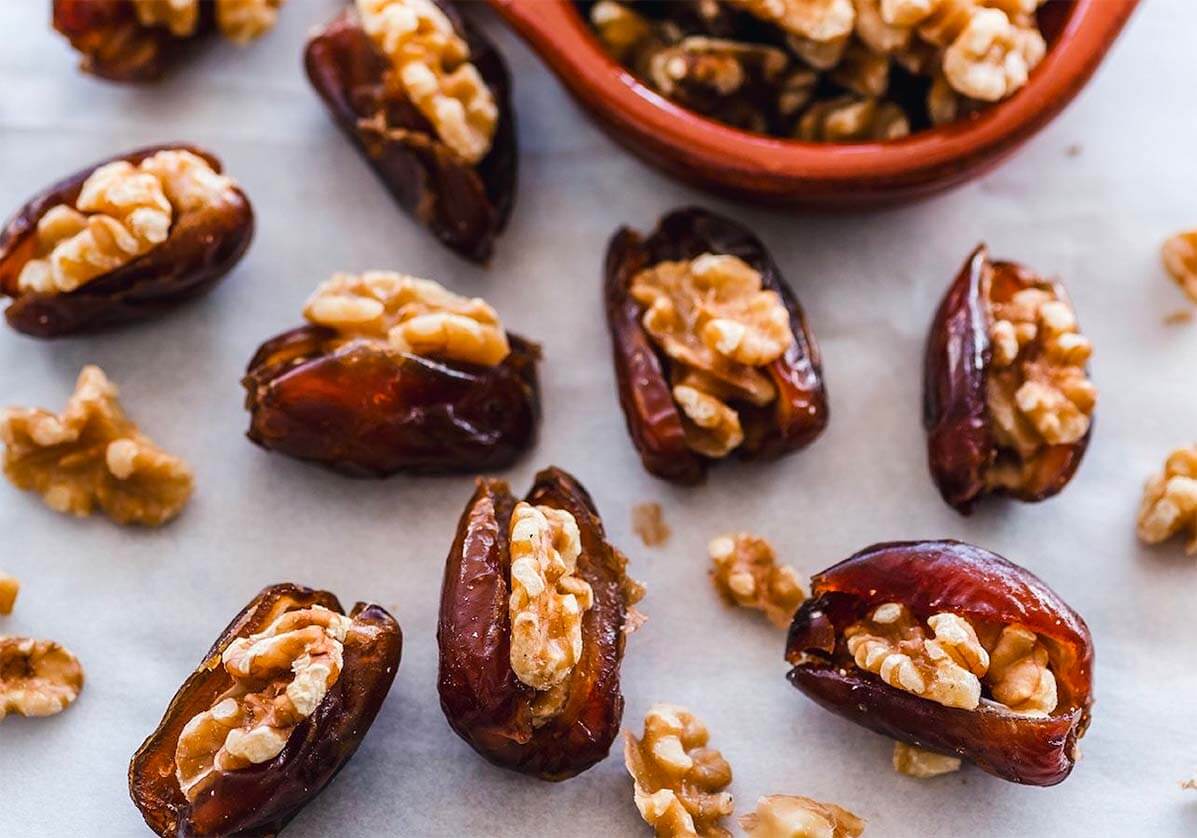Date Varieties: Barhi
- Date Varieties
- January 23, 2022
- 8 minutes read
Dates are one of the most plentiful fruits in the world. They have hundreds of varieties. They come with several colors, textures, and flavors. One of the date varieties is Barhi. It is also spelled as Berhi, Barhee or Barhy. The word Barhi means maturity impacted by summer winds of Basra. Barhi is considered to have a medium to late ripening period. It has a high yield of 200 kg per palm on average.
BARHI DATES AND ITS DIFFERENCE TO OTHER VARIETIES:
Barhi dates originate from Iraq. They are also found in Palestine and Egypt. Barhi date fruits are known to be consumed in their fresh form. They vary from other date varieties in different ways:
Appearance
Barhi has an amber to reddish brown color. It also has an ovate to rounded shape with a medium thick skin. It is considered to be a medium sized fruit.
Taste
Barhi has an exquisite and rich flavor. Its flesh is juicy and dense. At the soft ripe stage, the fruit has a very sweet taste. Glucose, fructose, and sucrose are the main sugars found in Barhi date fruits.
Nutrition
Barhi dates are rich in fiber. They have about 9.4 % fiber content – higher than most other varieties.
They also provide a good amount of energy. Every 100 g of fruit provides about 239 calories.
Barhi dates have a protein content of 2.3%, very negligible lipid content (0.1%), and at least about 58% of carbohydrate content. Barhi fruit dates also provide many vitamins and minerals. These include beta carotene, vitamin B5, sodium, potassium, calcium, iron, and phosphorus.
This is why Barhi dates are nutrient-rich, and you include them in your healthy diet. Regarding the fruit’s moisture, it is about 30% water.
BARHI DATES AND THEIR HEALTH BENEFITS:
Dates are rich in fiber, natural sugar, and nutrients. Moreover, they support your heart and brain health. Dates improve your immune and gastrointestinal functions. Some other benefits include their low glycemic effect for people who want to improve their blood sugar levels and reduce the risk of certain diseases.
Date fruits are high in antioxidants, and barhi dates are no exception. They are a good source of phenolic and flavonoid compounds. The latter plays a role in protecting your body from any oxidative stress. Oxidative stress may contribute to inflammatory, chronic diseases. Antioxidants help combat oxidative stress by neutralizing free radicals.
Because of their antioxidant content, date varieties can contribute to a lower risk for cancer, heart, and other diseases.
Like all date fruit varieties, Barhi dates have anti-microbial properties. Dates have been used medicinally in certain cultures for intestinal disorders, fever, bronchitis, and wounds. More research is needed in this area to understand the mechanism of action fully. They also have an anti-inflammatory effect. Thus, they could help reduce chronic inflammation in the body when included as part of an anti-inflammatory diet.
SHOPPING FOR AND STORING BARHI DATES:
The quality of the date fruits is affected by different factors like color, size, defects, texture, and decay. Choose Barhi dates that are plump and have a golden-yellow color. Avoid buying dates that feel hard, dried, or too shriveled. Wrinkles are fine. Plus, look out for dates that have white spots on their skin. This is a sign of sugar crystallization which means they have aged and are less fresh. You can still eat dates that have started to crystalize, but it’s better to avoid buying them at that stage.
It is possible to find the common varieties of dates at most markets. However, you might need to check specialty markets for Barhi dates.
Dates can stay fresh for a long time – especially if stored correctly. You should keep them in an airtight container. You can keep your dates at room temperature. You can store your date fruits in the refrigerator for up to six months. You can also store your dates in the freezer for up to 12 months. Keep in mind that the Barhi date variety is seasonal.
Moreover, Barhi dates are more perishable than when they are fully ripe. So, it will be good to store them properly for maximum shelf life. Refrigerating or freezing them is highly recommended.
HOW TO COOK WITH BARHI DATES:
Since Barhi dates are sweet with a rich and syrupy taste. You can enjoy them on their own as a healthy snack, or you can use them as a natural substitute for refined sugars.
Barhi date fruits are convenient for homemade desserts. They pair deliciously with other fruit varieties.
Pitted and diced Barhi dates can be added to a fruit salad for an extra sweet crunchiness. You can also add Barhi dates to your breakfast bowl made of yogurt, fruits, nuts, and coconut flakes.
For optimal balance, pair dates with a protein or healthy fat to feel full for longer, balance blood sugar, and improve overall satisfaction at the meal.
CONCLUSION:
Dates are considered to be a holy fruit in the Middle East. Even the date palm tree is viewed as the “Tree of Life.” There are many dates with various flavors, colors, and shapes. However, they all have one thing in common: their health benefits. Therefore, add some dates to your diet if you want to nourish your body with some extra energy, antioxidants, and fiber. Have Barhi dates as a simple healthy snack, on top of your salads, desserts, or breakfast!
Summary
Barhi dates are one of the popular date varieties. They have firm skin and amber to golden brown color. They are rich in nutrients, antioxidants, fiber, and energy. Plus, they have anti-inflammatory and anti-microbial properties. When you buy them fresh, they are fragile and perishable. This is why they need to be appropriately stored for optimal shelf life. The best way to keep them is via refrigeration or freezing. Include Barhi dates in your healthy diet. You can have them as snacks on their own or added to your dessert recipes, salads, or breakfast bowl.
Scientific Information
Beta-carotene: It is a form of a carotenoid. Carotenoids provide reddish-violet colors to plants such as carrots and apricots. It is a provitamin. It is used by your body to produce Vitamin A.
Phenolic and flavonoid compounds: They are antioxidants from the polyphenol category, known to improve health and prevent certain diseases.
Chronic inflammation: It is a steady and long-term inflammation that lasts months to years. It is the reason for most chronic diseases such as diabetes, heart disease, and so on. It could also threaten the longevity and overall health of the individuals.









